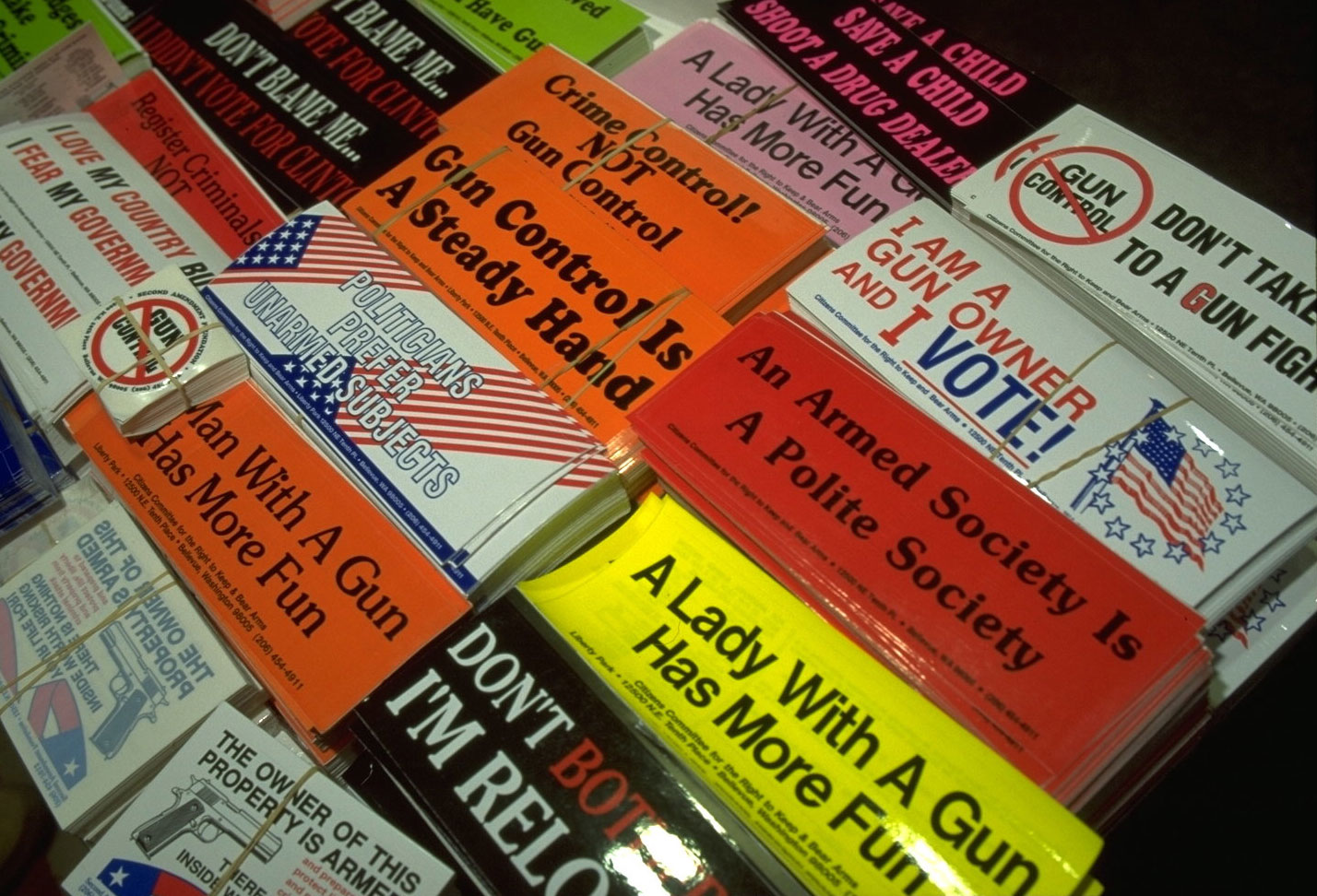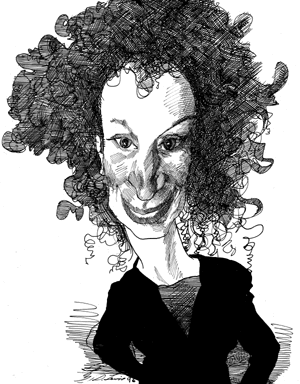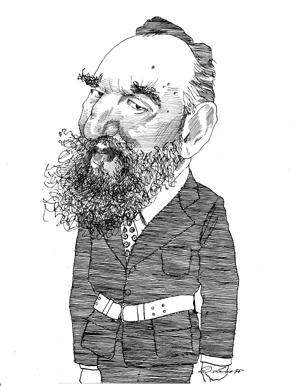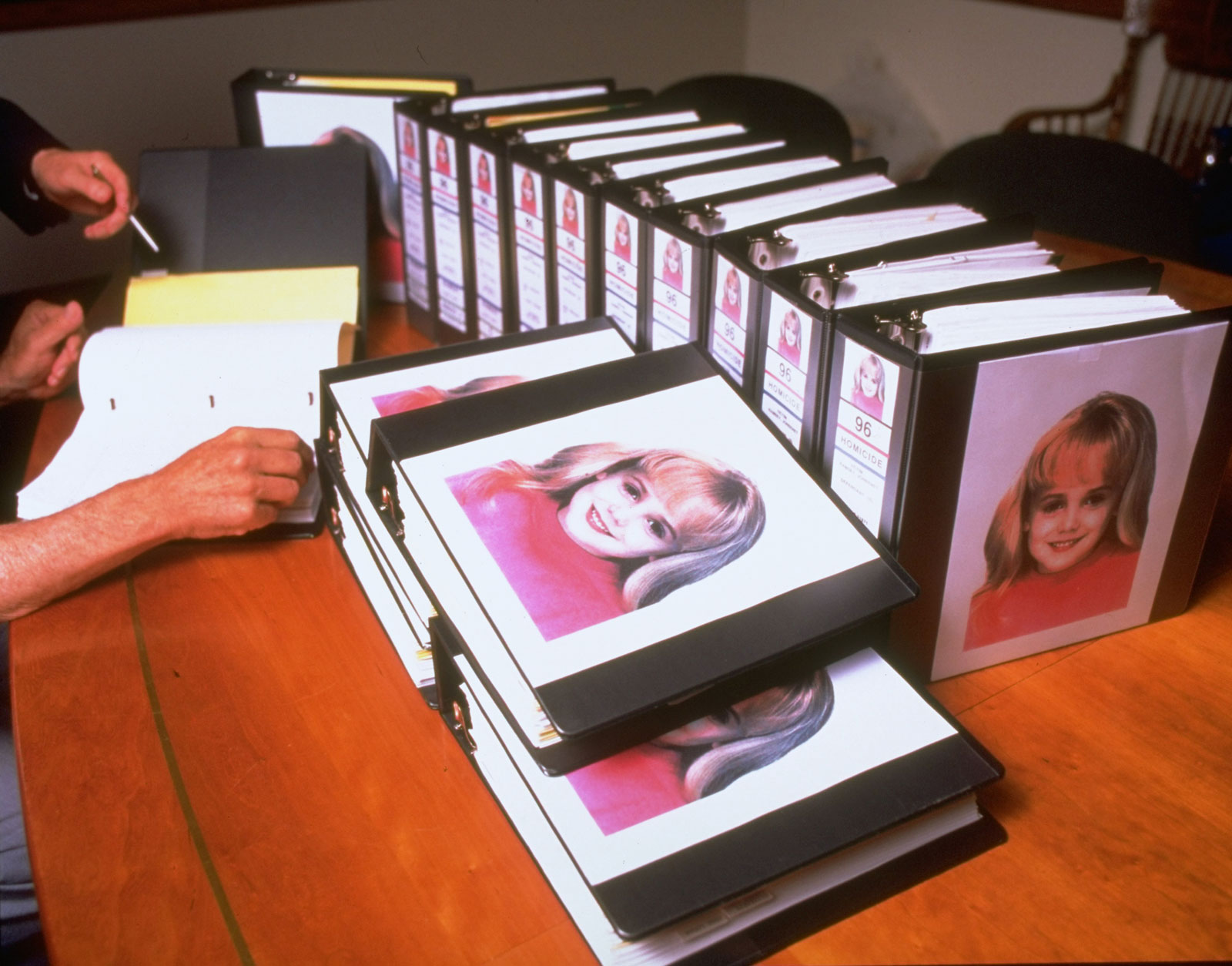To celebrate the Review’s fifty-fifth anniversary we have been featuring some notable articles from the magazine’s archives. Today we travel back to the late 1990s, when Garry Wills investigated the origins and meaning of the Second Amendment, Hilary Mantel read Margaret Atwood’s novel Alias Grace, Martin Filler assessed the new Getty Center in Los Angeles, Alma Guillermoprieto reported on the state of Cuba after four decades of Fidel Castro, and Joyce Carol Oates considered four books about the murder of JonBenét Ramsey.
1995
To Keep and Bear Arms
Garry Wills
To bear arms is, in itself, a military term. One does not bear arms against a rabbit. The phrase simply translates the Latin arma ferre. The infinitive ferre, to bear, comes from the verb fero. The plural noun arma explains the plural usage in English (“arms”). One does not “bear arm.” Latin arma is, etymologically, war “equipment,” and it has no singular forms. Even outside the phrase “bear arms,” much of the noun’s use alone echoes Latin phrases: to be under arms (sub armis), the call to arms (ad arma), to follow arms (arma sequi), to take arms (arma capere), to lay down arms (arma ponere). Thus “arms” in English, as in Latin, is not restricted to the meaning “guns.”
1996
Murder and Memory
Hilary Mantel
Margaret Atwood has always written her characters from the inside out. She knows them: in their hearts, their bones. For many years now she has been a stylist of sensuous power. In Alias Grace she has surpassed herself, writing with a glittering, singing intensity. She digs her unifying images deep into the flesh of the book.
1997
The Big Rock Candy Mountain
Martin Filler
There is something new to watch for on the L.A. horizon. You wonder whether it can be seen from the sky, and it can. The creamy, gleaming Getty Center stands out against the sere brown Santa Monica Mountains with all the impressive mass of a geological formation. In view of the kilotons of earth moved in its making and the stone used for its cladding, this architectural prodigy is indeed a man-made mountain. As you head northwest on the San Diego Freeway from the airport to Brentwood, the Getty Center, perched high atop a distant hill, drifts in and out of sight. It brings to mind a latter-day Shangri-La.
1998
Fidel in the Evening
Alma Guillermoprieto
If you are in the neighborhood of forty years old and Cuban, Fidel Castro has been at the center of your heart and thoughts, for however small a second, each day of your life. Perhaps you saw him first in the Plaza of the Revolution, when doves landed on his shoulders as he made his first speech in power. Even if you weren’t there you remember this event as if it had happened to you, because the photographic image of that moment has become part of the national memory. Fidel visited the shiny new infant nurseries and kindergartens and dandled you on his knee and patted your teacher on the back and told you in his papery voice that you were the future of the Revolution. Later he would spread his solemn soaring gaze over Cuba like a protective mantle and you saw him on every poster and wall mural in your barrio. “With Fidel, our whole life!” “In every barrio, Revolución!”
1999
The Mystery of JonBenét Ramsey
Joyce Carol Oates
The notorious case of the murder of six-year-old child beauty-pageant winner JonBenét Ramsey in Boulder, Colorado, on the night of Christmas 1996, a case that Sherlock Holmes would have “solved” in a few seconds’ ratiocination (“No footprints in the snow around the house? No forced entry? A staged kidnapping, ransom note seemingly written by the mother?”), so ineptly investigated by police that no arrests have been made in over two years, is uniquely of our time: a murder mystery which many of the writers under review suggest could be solved is nonetheless stalled, perhaps sabotaged, by a police department and a district attorney’s office not only inexperienced at handling homicide cases but intimidated by the wealth of their primary suspects, the parents of the murdered child, and by their high-powered legal team.







